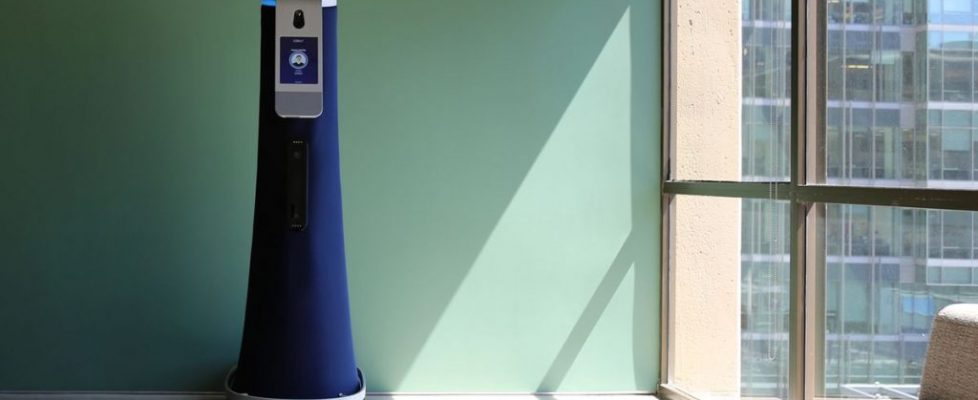Study-security guards have an 84 percent chance of their jobs being automated over the next 20 years

Atlanta GA Oct 10 2018
Oxford University’s 2013 study on the future of employment predicted that security guards have an 84 percent chance of their jobs being automated over the next 20 years, ranked between “lathe and turning machine tool setters” and “tailors, dressmakers, and custom sewers” on the list of “computerizable” occupations.
That possibility — and the evolution of robotics technology — has led to a new crop of companies like Cobalt and Knightscope engineering and leasing out security robots: Person-sized devices that roll around corporate offices, equipped with heat sensors, facial detection and employee badge scanners. The robots roam autonomously, looking for signs of trouble, like an unrecognized person entering the building late at night.
But are these really replacements for human guards? Is this really where security is going?
For starters, unlike the 1.1 million people employed in the U.S. as security guards, these robots aren’t designed to use force against an intruder. They also don’t have the emotional nuance to, say, resolve an escalating argument. And some simpler logistical barriers: They can’t yet climb stairs or operate elevators.
“When it comes to fixing a problem, you still need real people,” said Deano Roberts, global facilities director at Slack, which has two Cobalt robots, “Salt” and “Peppa,” that roam its hallways after hours. “But robots are great at detecting anomalies, something that humans actually aren’t all that good at.”
Travis Deyle, co-founder and CEO of Cobalt, says the machines are best suited for picking up on signals that could reveal a bigger problem, such as the presence of an employee or visitor being somewhere they shouldn’t be.
But the bots are also used for safety and maintenance detection, noticing anomalies like unusual heat. At Slack, the company has their robots routinely run a physical readiness check on meeting rooms — visually scanning for things like if the chairs are present and if the screens for video conferencing are turned on. The bots then send a daily report of any problems it finds to the facilities team. Roberts said in the past the company asked receptionists to do a morning check; this is easier.
So far, the robots at Slack haven’t taken away anyone’s job. The company still employs three night guards, same as it did before rolling out the bots. For now, Roberts says the bots are replacing some of the more mundane tasks like scanning a doorway or checking in badges so that human security guards can focus on intervening in critical situations.
When one of the bots recently detected a suspected thief attempting to steal company laptops late at night, humans were still very much involved. The bot politely asked the intruder to leave the building and immediately alerted security guards, who worked with police to apprehend the individual.
“Ultimately, these robots are backfill, so that humans can focus on the strategic, sympathetic and even empathetic work involved in security,” said Stacy Dean Stephens, executive vice president at Knightscope, one of the companies making security robots.
But assuming more security tasks inevitably become automated, that leads to some key design questions: Will it really look like this? Does a security guard robot really need to be an actual physical robot “guard?” Or will security and monitoring systems and sensors be more distributed, simply embedded all over a facility, connected to centralized software and monitoring services?
“Putting up cameras will get you way more coverage and probably at a fraction of the cost,” said Garrett Larsson, CEO of security firm Rhombus, which outfits offices with cameras at $250 each — compared to the security robots that can cost thousands of dollars each month. (Knightscope’s bots run from around $4,500 to more than $8,000 a month, and Cobalt’s cost about $6,000 a month; both companies include software and support staff with that cost.)
One psychological argument for the robots: Their mere lurking presence — even if they aren’t yet designed to tackle or restrain you — could be more intimidating to potential intruders than a security camera.
“Cameras are fixed. You might have zoom cameras set up, but with an autonomous mobile machine, it has a roaming physical presence that can act as a deterrent,” said John Santagate, research director of service robotics at IDC. “I use the analogy of the police car parked at the corner. Even when no one is in it, people around the car adjust their behavior.”
Recode.net




